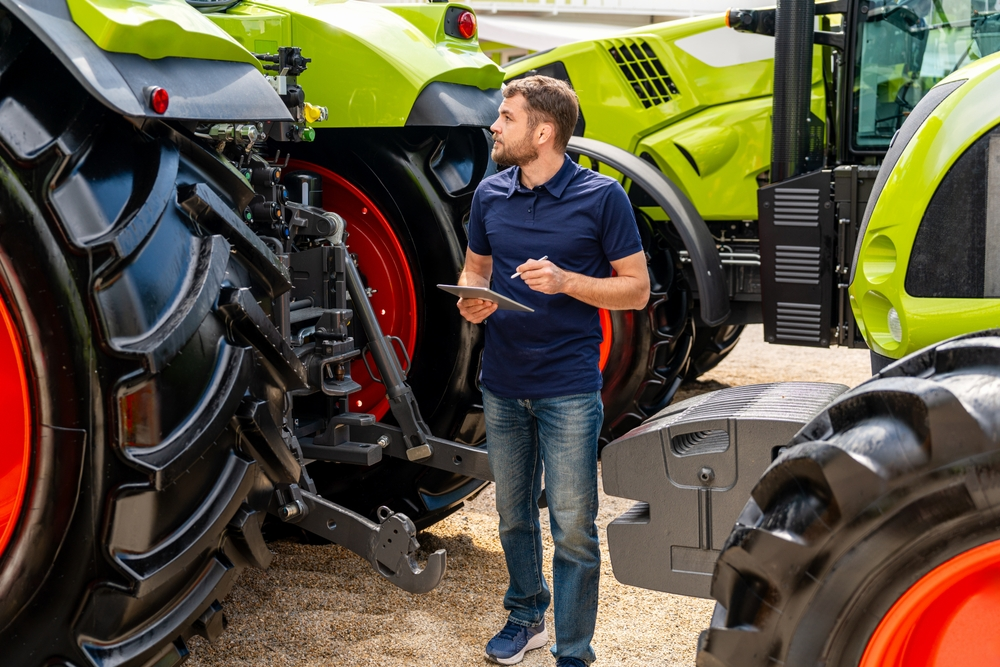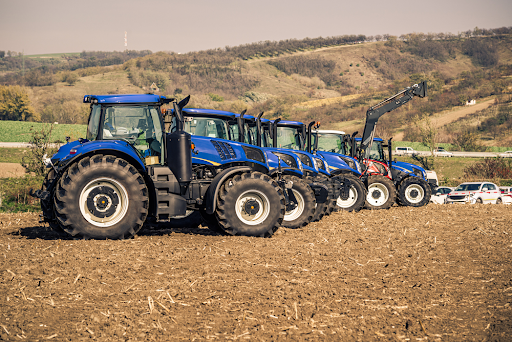When most people think of agriculture GPS tracking, they picture tractors running in perfectly straight lines across a field. But modern farming has outgrown that narrow view. In 2026, GPS tracking in agriculture extends far beyond tractors. It now covers service trucks, irrigation equipment, trailers, generators, and even livestock or seasonal assets.
Farms and agribusinesses increasingly operate like distributed fleets spread across large rural regions, with high-value equipment constantly on the move. The challenges are no longer limited to crop rows; they include tracking mobile assets, managing maintenance, reducing fuel waste, and ensuring uptime across operations.
That’s why comprehensive farm equipment tracking and GPS for agriculture fleets are transforming how agricultural businesses run.
The Growing Complexity of Farm Operations
Modern agriculture looks more like logistics than traditional farming. Many operations manage dozens of vehicles, multiple storage sites, and large areas of leased or shared land. Equipment moves between farms, towns, and even states.
Without digital visibility, it’s easy to lose track of where assets are or how efficiently they’re being used. Studies from the USDA and AgFunder Network Partners show that over 35% of agricultural businesses report equipment inefficiency as a leading cost driver.
Agriculture GPS tracking helps solve this by offering real-time insight into location, usage, and condition. Instead of relying on manual check-ins or spreadsheets, managers can see which tractors, sprayers, or haulers are in use and where idle time is happening.
Track Star’s platform combines this tracking data with maintenance and safety modules, giving farms a complete operational overview, from vehicle health to movement history.
Tracking Beyond the Field
Agriculture fleets include far more than tractors. Utility trucks, fertilizer spreaders, seed tenders, ATVs, and irrigation support vehicles all play key roles in daily operations. Many farms also use rental or contracted equipment that needs to be monitored across different properties.
A good farm equipment tracking solution provides visibility across all of these assets, even when they’re operating in areas with limited connectivity. Cellular, satellite, and Bluetooth-enabled GPS units ensure consistent data, while geofencing alerts let managers know when equipment enters or leaves designated zones.
This is especially valuable in rural operations, where theft and unauthorized use remain costly issues. GPS tracking helps prevent these losses by providing location alerts and recovery support in real time.
Track Star’s system integrates with both vehicle and non-vehicle assets, from powered machinery to tow-behind implements. This creates an accurate inventory of where each piece of equipment is, who’s using it, and how it’s performing.
Maintenance and Uptime Visibility
A key benefit of GPS for agriculture fleets is maintenance automation. Agricultural machinery faces heavy workloads, irregular schedules, and tough environmental conditions. Breakdowns during planting or harvest season can cost thousands per day.
GPS tracking data feeds directly into preventive maintenance schedules, flagging issues before they turn into downtime. By monitoring usage hours, idle time, and travel distances, systems like Track Star automatically generate maintenance reminders for oil changes, filter replacements, and component inspections.
This level of visibility allows farms to plan maintenance around operational schedules rather than reacting to failures. The result is longer equipment lifespan, reduced unplanned downtime, and more consistent output throughout the season.
Fuel Efficiency
For large agricultural fleets, fuel costs make up a significant portion of operational expenses. Tractors, sprayers, and service trucks often run for long hours under varying load conditions, which makes monitoring fuel efficiency essential.
Agriculture GPS tracking helps identify patterns of excessive idling, unauthorized use, and inefficient engine hours, factors that directly affect fuel waste and equipment wear. By connecting GPS data with telematics insights, managers can pinpoint where resources are being used inefficiently and take corrective action.
Track Star’s reporting tools highlight trends such as vehicles left running during idle periods or machines operating outside designated zones. These insights help farms reduce unnecessary fuel burn, improve scheduling, and maintain healthier machinery.
Even small improvements in fuel management can make a measurable impact. According to a Farm Progress study, reducing idle time by just 10 to 15% can save hundreds of gallons of fuel each season across a mid-size fleet.

Rural Asset Management
Agricultural operations extend well beyond vehicles. Assets like irrigation pumps, generators, trailers, and mobile storage units are vital but often overlooked. Traditional rural asset management relied on manual tracking, which meant equipment could easily go missing or remain underutilized.
Modern agriculture GPS tracking applies to stationary and mobile assets alike. BLE tags, solar-powered trackers, and cellular or satellite-enabled devices keep tabs on non-powered items in remote locations.
For example, a farm can track its portable irrigation units or chemical tanks to ensure they’re positioned where needed and accounted for at season’s end. This is especially useful for operations that lease or rotate assets between properties.
By integrating asset data into a single platform, Track Star enables managers to view the deployment, usage, and last service date of every resource, all from a unified dashboard.
Seasonal Labor and Accountability
Agricultural operations depend heavily on seasonal workers, contractors, and third-party haulers. That can create accountability challenges, especially when multiple people share equipment or vehicles.
GPS tracking offers a digital record of usage and timing, ensuring transparency across teams. Fleet managers can assign user IDs or driver tags to track who operated each vehicle and when. This helps address operational disputes, safety concerns, and maintenance tracking tied to individual users.
Track Star supports driver identification across agriculture fleets, providing a clear chain of responsibility without adding manual paperwork.
This type of accountability not only reduces misuse but also supports training and performance reviews. When workers see how data connects to efficiency and safety, they tend to treat equipment with more care.
Data-driven Decisions Across the Season
Agriculture GPS tracking isn’t just about knowing where equipment is; it’s about using that data to make smarter business decisions.
Historical tracking data reveals trends like machinery overuse, idle equipment, or inefficient field coverage. Combining this with yield, labor, or fuel data allows farms to optimize resource allocation for future seasons.
For example, analyzing GPS data might show that certain assets are underutilized during the planting season but overbooked during harvest. That insight helps plan purchases or rentals more strategically.
Track Star’s analytics tools bring these insights together, providing both short-term visibility and long-term operational intelligence that supports better financial planning and resource distribution.
Integration with Other Systems
Many farms already use precision agriculture tools or ERP systems for finance and inventory. The best GPS for agriculture fleets integrates directly with these systems via open APIs, creating a unified data environment.
This means maintenance alerts, utilization data, and asset locations can feed directly into existing workflows. Instead of juggling separate tools, farm managers can view every key metric, from asset movement to cost per hour, in one place.
Track Star’s open integration model supports these cross-platform connections, making GPS tracking a foundational part of broader farm management rather than a standalone add-on.
Final Thoughts
Agriculture GPS tracking has evolved far beyond precision farming. It’s become an operational necessity for managing assets, labor, maintenance, and logistics across growing agricultural networks.
From farm equipment tracking to rural asset management, modern systems give agricultural leaders complete control and accountability. Platforms like Track Star make it easier to manage every moving part of the business (literally and figuratively) with one unified system.
If your operation still relies on manual tracking or isolated equipment logs, you’re missing critical insights that impact productivity and profitability. Request a call with Track Star today and see how we can help your farm operate smarter, safer, and more efficiently.


.png)